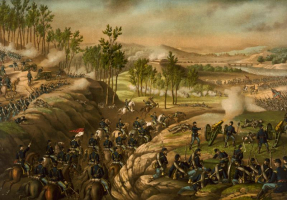Top 10 Facts About The Battle of Chancellorsville
The Battle of Chancellorsville was an important American Civil War battle that took place near the settlement of Spotsylvania Courthouse, Virginia, from April ... read more...30 to May 6, 1863. The Union troops crossed the Rappahannock River on April 27, 1863, kicking off the Chancellorsville campaign. The heavy battle began on May 1 and lasted until the Union soldiers crossed the river on the night of May 5 to May 6. Although the South was humiliated by their defeat, it was General Lee's behavior at battles such as Chancellorsville that allowed Southerners to carry their heads high in the face of the North's ultimate success. Here are some interesting facts about the Battle of Chancellorsville we compiled for you.
-
One of the most interesting facts about the Battle of Chancellorsville is that Maj. Gen. Ambrose Burnside sought to purge the Army of the Potomac's leadership. Following the Battle of Fredericksburg and the humiliating Mud March in January 1863, the Army of the Potomac suffered from mounting desertions and low morale. Maj. Gen. Ambrose Burnside sought to purge the Army of the Potomac's leadership, dismissing a number of generals he blamed for the tragedy at Fredericksburg. In truth, he had no authority to fire anyone without the consent of Congress.
Burnside's purge failed predictably, and he resigned as commander of the Army of the Potomac to President Abraham Lincoln. He even attempted to resign from the Army outright, but the president persuaded him to stay, reassigning him to the Western Theater as commander of the Department of Ohio. The IX Corps, Burnside's former command, was transferred to the Virginia Peninsula, prompting the Confederates to separate troops from Lee's army under Lt. Gen. James Longstreet, a decision that would be crucial in the next conflict.
Abraham Lincoln had become convinced that the ideal aim for his Eastern army was the army of Robert E. Lee, rather than any physical features such as a capital city, but he and his generals realized that threatening Lee's capital was the most reliable means to draw him to a decisive fight. On January 25, 1863, Lincoln tried a fifth time with a new general, Maj. Gen. Joseph Hooker, a man with a pugnacious character who had performed well in previous inferior posts.

Battle of Fredericksburg -en.wikipedia.org 
Mud March -en.wikipedia.org -
It is a fact that after being appointed, Hooker began a reorganization of the army. Maj. Gen. William B. Franklin also left after Burnside's departure. Franklin was a staunch admirer of George B. McClellan and refused to serve under Hooker because he despised him personally as much as because he was senior in rank to Hooker. Maj. Gen. Edwin V. Sumner resigned due to his advanced age and failing health. He was reassigned to a command in Missouri, but he died before assuming it. Brig. Gen. Daniel Butterfield was relieved of command of the V Corps and sent to serve as Hooker's chief of staff.
Hooker began a much-needed reorganization of the army, abandoning Burnside's grand division structure, which had proven unwieldy; he also no longer had enough senior officers on hand to lead multi-corps operations. He divided the cavalry into a distinct corps under Brig. Gen. George Stoneman's command (who had commanded the III Corps at Fredericksburg). While concentrating the cavalry, he scattered his artillery battalions under the direction of infantry division commanders, diminishing the coordinating power of the army's artillery officer, Brig. Gen. Henry J. Hunt.
Hooker acquired a reputation as a superb administrator and restored morale among his soldiers, which had dropped to a new low under Burnside. Among his changes to the troops' daily diet were camp sanitary changes, improvements and accountability of the quartermaster system, the addition of and monitoring of company cooks, several hospital reforms, an improved furlough system, orders to stem rising desertion, improved drills, and stronger officer training.
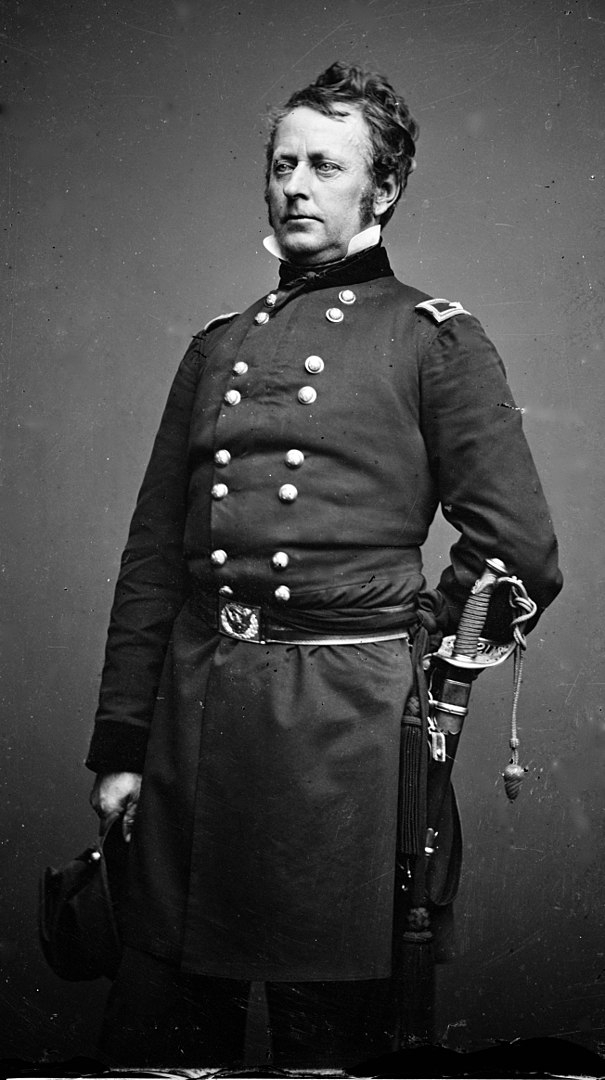
Joseph Hooker -en.wikipedia.org/ 
Daniel Butterfield -en.wikipedia.org -
One of the most interesting facts about the Battle of Chancellorsville is that the Chancellorsville campaign was one of the most lopsided battles of the war. It was one of the most lopsided battles of the war, with the Union's effective combat force being more than twice that of the Confederates, the highest disparity in Virginia during the conflict. Hooker's army was better equipped and rested after several months of inaction. Lee's men, on the other hand, were under-supplied and dispersed throughout Virginia. Longstreet's Corps had already been separated and stationed near Norfolk to prevent a potential threat to Richmond from Federal troops stationed on the Peninsula at Fort Monroe and Newport News, as well as in Norfolk and Suffolk.
Given the ongoing Federal passivity, Longstreet's major duty by late March had become requisitioning provisions for Lee's army from North Carolina and Virginia farmers and planters. As a result, Maj. Gen. John Bell Hood and Maj. Gen. George Pickett's divisions were 130 miles (210 km) away from Lee's army and would take a week or more to reach it in an emergency. Lee's worst mistake after nearly a year of campaigning was allowing these troops to escape his direct control. Despite his best efforts, these troops would not arrive in time to assist his outnumbered forces.

en.wikipedia.org 
history.com -
One of the most interesting facts about the Battle of Chancellorsville we want to introduce to you is that despite Hooker's successful flanking maneuver, Lee seized control and held it for two months. Many senior Federal officers believed that Lee's only option was to retire southwards towards Richmond after Hooker's successful crossing of the Rappahannock. Hooker withdrew eastward and out of the Wilderness on May 1, 1863, with the majority of his army safely positioned at the Chancellorsville crossroads. The area to the east was much more open, allowing the Federal army to fully utilize its overwhelming numerical strength.
However, General Stonewall Jackson's men crashed into them on the Orange Turnpike before the Yankees could clear the woods. Hooker ordered a general retreat from this wide land after a furious, brief skirmish with Jackson's forces on the Union right flank. The first day at Chancellorsville was a tiny deed with far-reaching consequences. The next day, deep amid the tangled Wilderness, Hooker's lethargic army failed to discover Lee's ambitious plan to maneuver a heavy column onto their right using the woodland roads to the south. This type of maneuver would have been impossible to pull off on the wide ground.
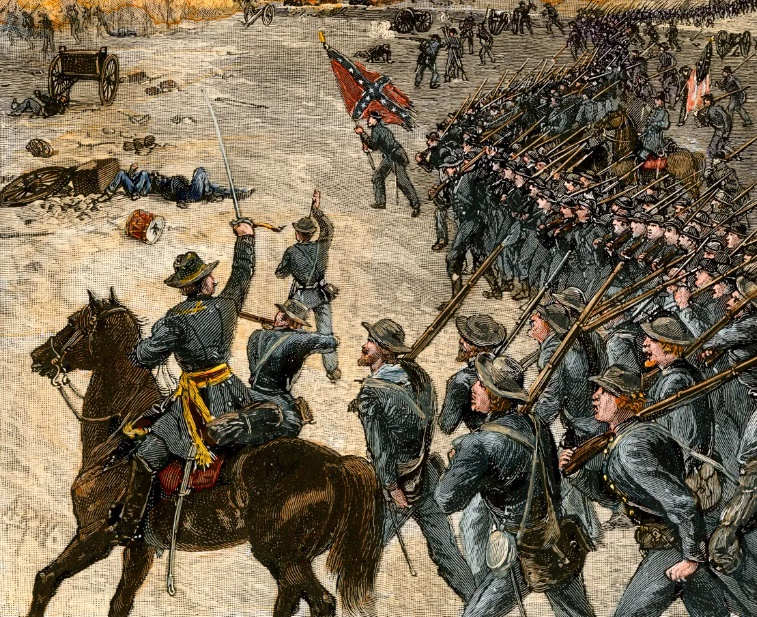
britannica.com 
britannica.com -
Another fact is that on the first day of the battle, Hooker passes on the opportunity, ceding the initiative to Lee. On May 1, Hooker marched from Chancellorsville toward Lee, but in the face of superior numbers, the Confederate general split his army, leaving a small force at Fredericksburg to dissuade Maj. Gen. John Sedgwick from advancing while attacking Hooker's advance with roughly four-fifths of his army. Despite his subordinates' protests, Hooker withdrew his forces to the defensive lines around Chancellorsville, handing the initiative to Lee.
Stonewall Jackson saw two divisions of Confederates fortifying a ridge at Zoan Church on May 1. He told them to put down their shovels, pick up their firearms, and march toward the Union soldiers to attack. The Union forces had just chosen to resume their advance and had not anticipated any Confederate resistance. Hooker ordered his forces to retreat and take defensive positions in the forest.
Hooker's left flank was solidly moored on the Rappahannock by Meade's V Corps, and his center was heavily entrenched, while his right wing was "in the air." Howard's XI Corps was positioned on the Orange Turnpike, which extended past Wilderness Church, making it exposed to a flanking attack. Investigations into a way to the flank led to the discovery of Charles C. Wellford, the proprietor of Catharine Furnace, who showed Jackson's mapper, Jedediah Hotchkiss, a recently constructed road through the woodland that would conceal marchers from the observation of Union pickets. Lee ordered Jackson to conduct a flanking march, identical to the one that had been so successful before the Second Battle of Bull Run (Second Manassas).

pbs.org 
wondriumdaily.com -
It is a fact that on the night of May 2, 1863, Stonewall Jackson was wounded by his own men. On May 2, Jackson deployed his corps against the Union's left flank. All day, there was fighting on and off. Jackson launched an attack on the Union's XI Corps around 5:20 p.m. The Federals counterattacked until the combat was stopped by darkness. Stonewall Jackson hoped to capitalize on his advantage before Hooker and his army could gather their bearings and plan a counterattack, which may still succeed due to the massive numerical difference. That night, he rode out onto the Plank Road, beyond the farthest advance of his soldiers, to assess the viability of a night attack by the light of the full moon. When one of his staff officers warned him about the dangerous position, Jackson replied, that the danger was all over. The enemy was routed. Went back and told A.P. Hill to press right on.
WhileJackson was on a night reconnaissance mission with one of his staff officers when he was accidentally shot by his own soldiers. As he and his staff began to return, they were mistakenly identified as Union cavalry by troops from the 18th North Carolina Infantry, who opened fire on Jackson. Although Jackson's three bullet wounds were not life-threatening, his left arm was fractured and had to be amputated. He caught pneumonia while recovering and died on May 10. His death was a crushing blow to the Confederacy. Jackson's Corps was temporarily led by General J.E.B. Stuart.
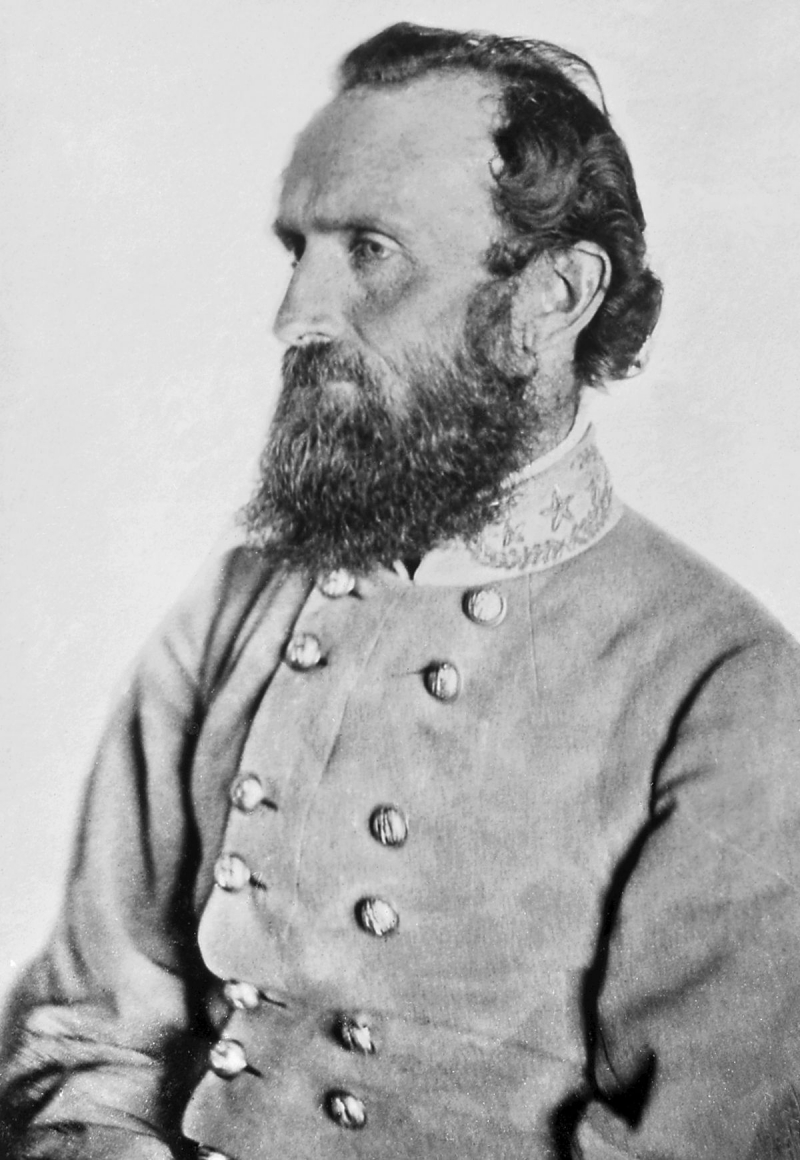
Stonewall Jackson -vi.wikipedia.org 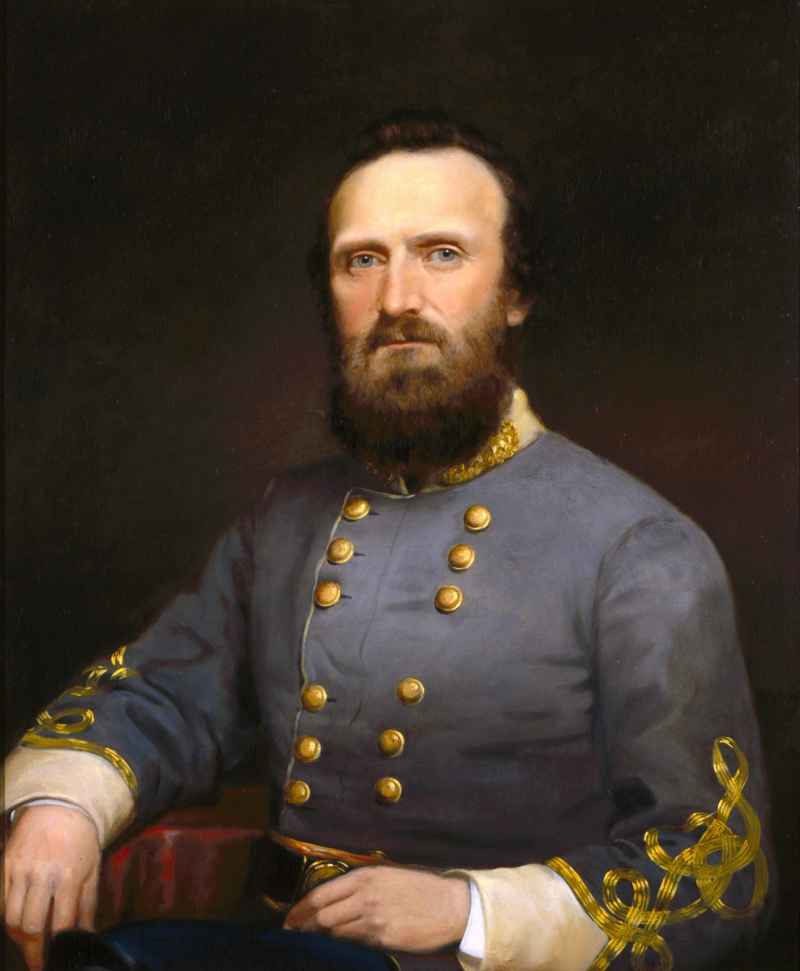
Stonewall Jackson -encyclopediavirginia.org -
The Union evacuation of Hazel Grove proved crucial to the Confederacy's triumph on May 3. Despite Stonewall Jackson's dramatic victory on May 2, 1863, the Union army remained the vastly superior force, occupying several of the most strategic positions on the battlefield. A high, open plateau known as Hazel Grove was one of the most critical and was commonly referred to as the key to the Chancellorsville Battlefield. With its commanding view of the Union defenses at Fairview and Chancellorsville, Hazel Grove was an ideal location for Confederate artillery intending to attack the center of the Federal position.
Col. Edward Porter Alexander of Georgia persuaded Maj. Gen. Jeb Stuart, the interim corps commander, to make its capture the top priority. At dawn on May 3rd, Confederates led by Brig. Gen. James J. Archer charged up the slope of Hazel Grove and captured four artillery pieces and approximately 100 soldiers; nevertheless, this small Union force was already retiring from this strategic high ground. Hooker had, for some reason, ordered the abandonment of this critical position, a crucial miscalculation for which he and his force would pay.
Using the new method of artillery battalions, Alexander loaded 30 guns into Hazel Grove and set them loose on Hooker's defenses. The overwhelming weight of artillery fire from Hazel Grove, combined with other guns along the Orange Turnpike, proved too much for the Union troops gathered around the Chancellorsville clearing. The area was abandoned, and Confederate troops, led by their hero, Robert E. Lee, rode into it victorious.

civilwarmonths.com 
encyclopediavirginia.org -
One of the most interesting facts about the Battle of Chancellorsville is that Lee paid a terrible price for his victory, suffering more casualties than in any previous fight. Despite being outnumbered by more than two to one, Lee achieved possibly his finest victory of the war, dubbed the "perfect battle." However, he paid a terrible price for it, suffering more casualties than in any previous fight, including the Confederate defeat at Antietam. With only 60,000 men engaged, he lost 13,303 fatalities (1,665 killed, 9,081 wounded, and 2,018 missing), losing over 22% of his force in the campaign, men that the Confederacy could not replace with its meager numbers. He also lost his most aggressive field commander, Stonewall Jackson. The other Confederate general slain in the battle was Brig. Gen. Elisha F. Paxton. After rejoining the main army, Longstreet slammed Lee's approach, claiming that engagements like Chancellorsville cost the Confederacy more soldiers than it could afford to lose.
Of the 133,000 Union men engaged, 17,197 were casualties (1,606 killed, 9,672 wounded, 5,919 missing), a far smaller percentage than Lee's, especially when 4,000 men from the XI Corps were taken on May 2. There were essentially no differences between the Confederate and Federal losses at Chancellorsville when comparing simply the killed and wounded. During the campaign, the Union lost three generals: Maj. Gens. Hiram G. Berry and Amiel W. Whipple, as well as Brig. Gen. Edmund Kirby.

Hiram George Berry -en.wikipedia.org 
Amiel Weeks Whipple -en.wikipedia.org -
Another fact is that Hooker's defeat at Chancellorsville was primarily due to his own self-confidence. Hooker, who began the campaign believing he had 80 chances in 100 to win, lost the battle due to miscommunication, the incompetence of several of his top generals (most notably Howard and Stoneman, but also Sedgwick), and, most importantly, the collapse of his own confidence. Hooker's mistakes included abandoning his offensive thrust on May 1 and ordering Sickles to surrender Hazel Grove and withdraw on May 2. He also miscalculated in his troop deployment; despite Abraham Lincoln's advice to put in all his men this time, the Army of the Potomac's 40,000 men barely fired a shot. When afterward questioned about why he had ordered a halt to his advance on May 1, Hooker is said to have said, "For the first time, I lost faith in Hooker." In Lee's Greatest Victory, Robert K. Krick wrote that Chancellorsville was a mash-up of insanely dangerous gambits that resulted in a spectacular victory. Hooker's campaign devolved into a tale of squandered opportunities and misused forces after the spectacular initial maneuvers.
President Lincoln elected to keep Hooker in command of the army, but tensions between Lincoln, general-in-chief Henry W. Halleck, and Hooker grew unbearable early in the Gettysburg campaign, and Lincoln relieved Hooker of command on June 28, just before the Battle of Gettysburg. One of the consequences of Chancellorsville at Gettysburg was Daniel Sickles' decision to violate his general's orders and change his lines on the second day of battle to ensure that a little piece of high ground, the Peach Orchard, was not accessible to the enemy's artillery.

Maj. Gen. Henry W. Halleck -en.wikipedia.org 
Major General Joseph Hooker -en.wikipedia.org -
One more interesting fact is that due to Lee's greatest victory, the battle of Chancellorsville was sometimes described as his perfect battle. Chancellorsville is usually regarded as Lee's greatest and most unlikely victory. General Robert E. Lee led the Army of Northern Virginia (Confederate) in the Battle of Chancellorsville, while Major General Joseph Hooker led the Army of the Potomac (Union). Prior to the Battle of Chancellorsville, the Potomac army was led by General Ambrose Burnside, who only commanded in the battle of Fredericksburg, which prompted Lincoln to appoint Major General Hooker as his replacement. With Hooker in command, the Potomac army was in top condition, and stronger than ever before.
Hooker made the opening move, despite the Potomac being twice the size and far stronger than Lee's force. Despite being outnumbered roughly 2-to-1, Lee chose a hazardous and unorthodox strategy. He chose to divide his weaker forces to take on Hooker's army, including a daring raid on the Union general's right flank by Thomas "Stonewall" Jackson.
The daring but successful division of Gen. Robert E. Lee's army in the face of a far larger enemy force earned it the name "perfect combat." Lee's audacity, combined with Hooker's weak conduct in battle, resulted in a significant Union defeat. The enormous Confederate victory was tempered by the death of Lt. Gen. Thomas J. "Stonewall" Jackson as a result of friendly fire, a loss Lee compared to "losing my right arm." More important for Gettysburg was an incredible conviction that Lee earned from his huge victory at Chancellorsville, that his army was practically invincible and could accomplish everything he asked of it.

Gen. Robert E. Lee -en.wikipedia.org 
pbs.org

























